2.3 Rainforest biomes
Rainforests are one of the world’s most interesting biomes. As Source 2.1 showed, they are found on several continents, both north and south of the Equator.
Rainforests are such complex biomes that it is often difficult to take a photograph that allows a person to see all their features. These features include:
- height
- density
- coverage
- plant species
- special adaptations
- special relationships between plants.
Height
Rainforest trees are usually very tall. They have few branches until the top (or canopy) of the forest.
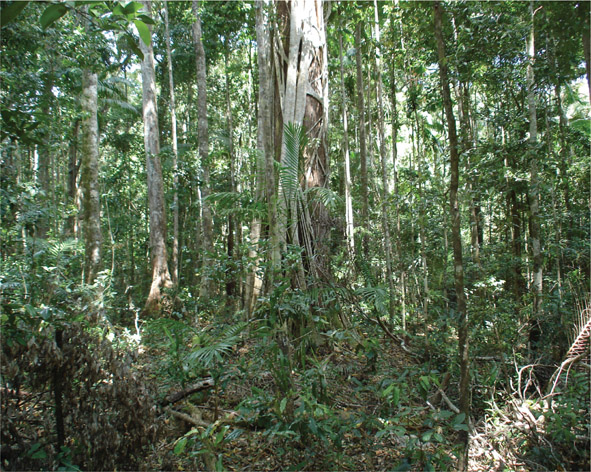
Density
Rainforests have a high density of trees per hectare compared with other forests. How is ‘tree’ defined here? A tree may be defined as a woody plant which has a girth (circumference) of at least 25 centimetres at a height of 130 centimetres. This is often referred to as circumference at breast height.
Coverage
One of the distinctive features of a rainforest is that the canopy is ‘closed’ – the branches of the trees link together at the canopy. This means that very little light reaches the forest floor, which has a major effect on the characteristics of the forest. Having no light reaching the forest floor means that one plant species is excluded from the rainforest. That species is found in many biomes and is the curse of the urban backyard. Can you guess what it is? Here are the final clues:
- It is green.
- It grows rapidly after rain.
- Keeping it under control in your backyard usually requires physical exertion with a machine, and most species contribute to greenhouse gases.
If you don’t know the answer it may be because you live in a unit or apartment.
Plant species
A rainforest is characterised by a wide variety of plant species growing at various height levels. It will have a number of canopy tree species, and many of them will not grow outside a rainforest environment. Attempts have been made to grow some of the commercially profitable rainforest species in plantation environments but the plants will not thrive.
Lower storeys of a rainforest also host a wide variety of plant species. Some of these are young plants of the canopy layer, waiting for a canopy tree to fall and create a space for them to grow up into. Others are plants which have adapted to living in the moist, humid, dark environment of the rainforest understorey. Mosses, lichens, epiphytes and palms fall into this category.
-
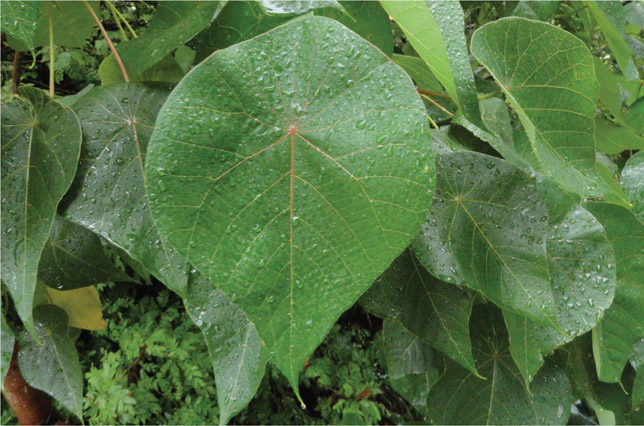
Source 2.5 The drip-tipped rainforest leaf of the macaranga plant helps the movement of water to the ground. -
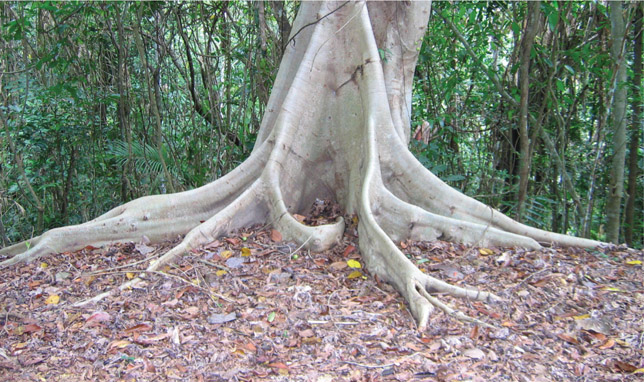
Source 2.6 Buttress roots on a tree growing on a steep slope near Cairns, Queensland
Special adaptations
The plants of a rainforest show evidence of many adaptations they have made to live in their environment.
The trees need to grow tall and straight very quickly if they are to take their place in the canopy layer. In order to compensate for the trees forming a closed barrier to sunlight reaching the ground, the leaves of the canopy trees have adapted so that rainfall will not be trapped in the canopy and evaporate back into the atmosphere but instead will make its way to the ground where it can be absorbed by plants.
Special relationships between plants
The rainforest has many plants which coexist. Vines – both woody and fleshy – grow on the trunks of trees and form part of the interlacing of plants in this biome.
Epiphytes, staghorns and orchids have found their own special place in the rainforest: they grow in places where falling plant and leaf litter accumulate and rot to provide food for them or, in the case of epiphytes, they grow in a cup-like shape so that they trap their own food.
The canopies of a tropical rainforest are so densely packed that rain falling on the trees at the top can take up to 10 minutes to reach the ground.
-
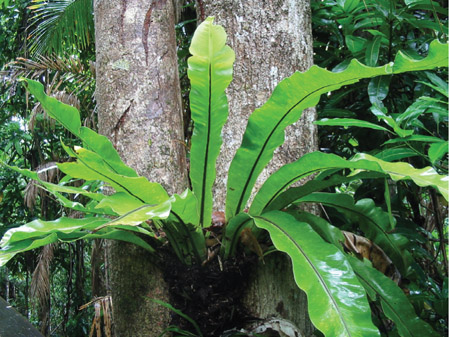
Source 2.7 Epiphyte growing on a rainforest tree near Barron River Falls, north Queensland -
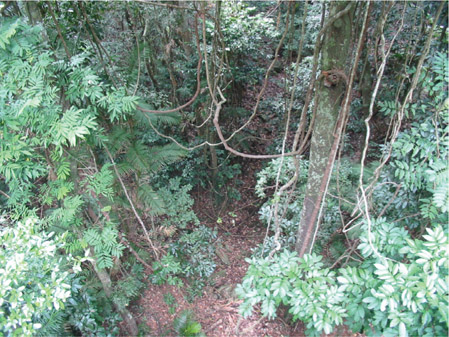
Source 2.8 Woody vines grow from tree to tree and work as a highway for animals in the forest.
Mosses, lichens and fungi play their own role, breaking down plant material at or near the forest floor so that it becomes food for the plant life above. It all works very well. All the species work together to support the future of the biome.
There is one final relationship between the plants of a rainforest which needs to be examined. Rainforests are among the most magnificent expressions of life on Earth. The profusion of plant life and the size of the forest – in terms of height and area – have led people to believe that this biome grows on very fertile soils. What else could account for the prolific growth?
However, in many rainforest areas the soil was not originally fertile. Over time, the rainforest converts the soil on which it grows into fertile soil that will support its growth. Rainforests expand their area by converting the soils around their edges into soils suitable for this growth. Rainforests are not the only plant communities that change the nature of the soil they grow on, but they are the best at this process. Plant communities can change soil types in different ways, as discussed throughout the chapter.